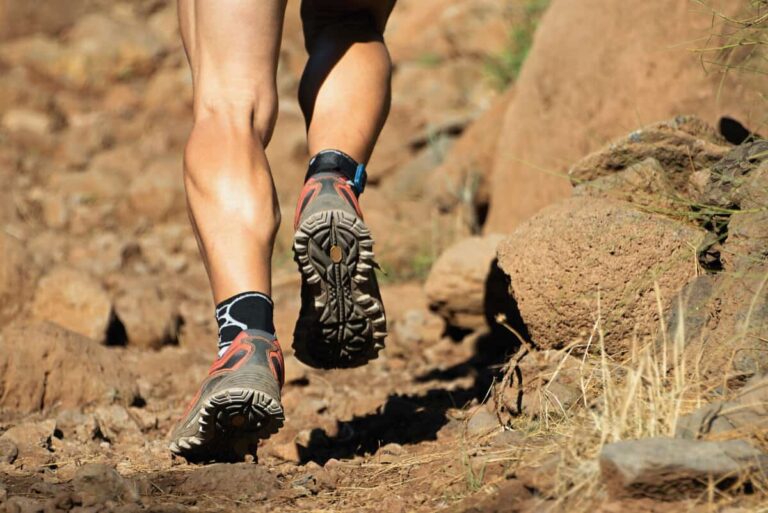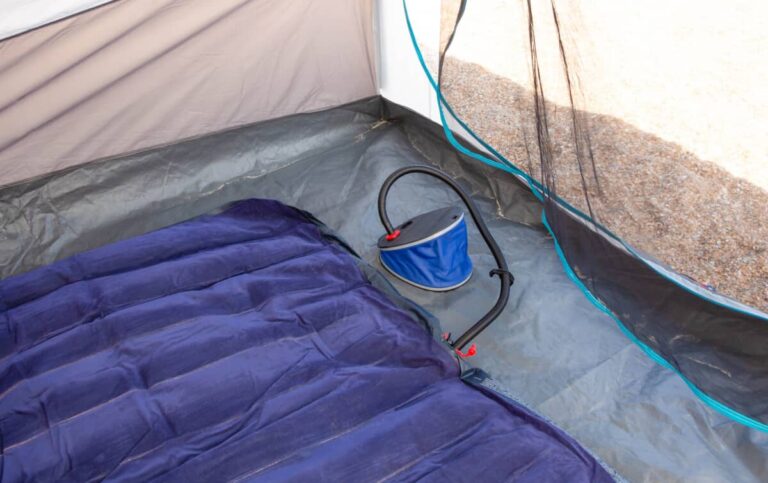How To Know When To Replace Running Shoes?
Knowing when to replace your favorite running shoes is difficult. They have carried you for hundreds of miles, and it can be hard to say goodbye. Even without being sentimental, running shoes are expensive! However, if it’s true that running with shoes that are too worn out increases your risk of injury, it’s worth taking the time to learn the signs of when to replace the shoe.
If you start to experience pain and discomfort while running, it’s usually an indicator that your shoes have lost some of their structural integrity. Inspecting the following parts will give you a clear indication if it needs replacing:
- Outsole
- Midsole
- Insole
- Shank
- Heel Counter
- Heel Collar
- Upper
- Toe Box
This article will examine the tell-tale signs and indicators to look out for when it comes to assessing if your running shoes need replacing. For example, we’ll talk about when you need to replace your running shoe, know if your running shoe is worn out, how often you should replace your running shoe, and how long a running shoe lasts. By working our way through the whole shoe, you will detect any issues early on.
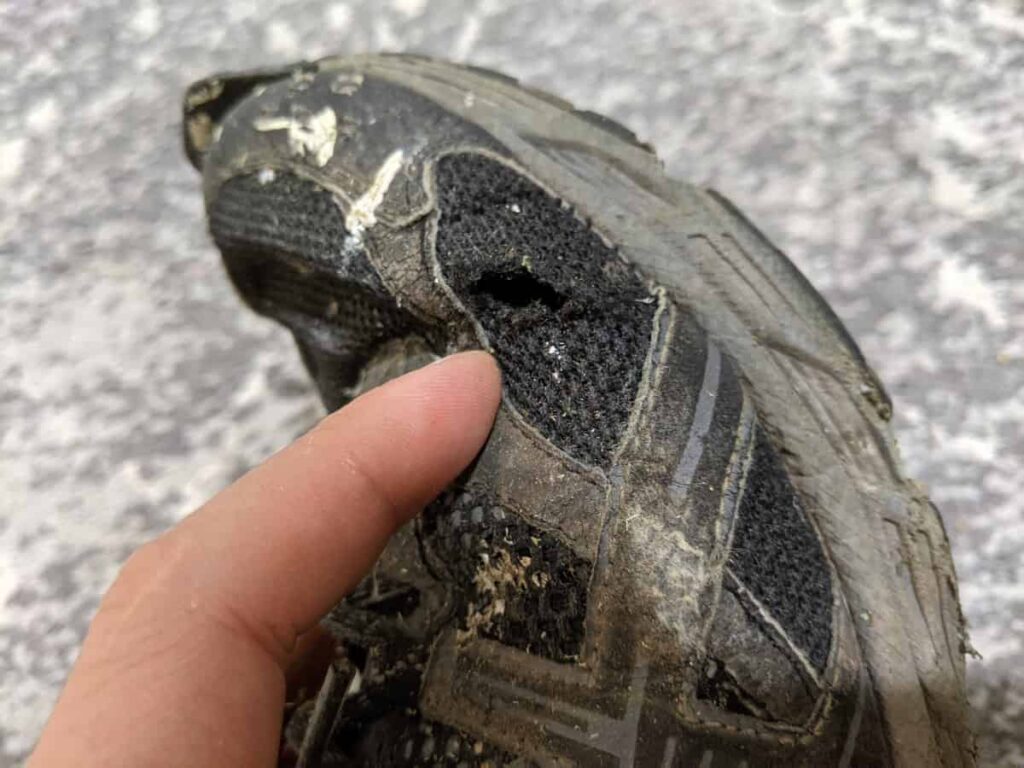
How Do I Know If My Running Shoes Are Worn Out?
The most crucial and important sign is if you feel less comfortable when running. Gone are the days that you feel as if you are running on a layer of clouds or marshmallows. Perhaps the shoe itself feels comfortable, but when running you might feel pain in your ankles, arches, heels, or even your knees or hips.
If you have injuries, they might make a comeback.
Visual Inspection
Now is the time to have a visual inspection of the main parts of your running shoe, deciphering if it’s too worn out to continue running in them. Deterioration of any of these components could be reason enough to decide that your shoes are too worn out to run in, safely.

Outsole
The outsole forms the bottom part of the shoe, usually a layer of rubber that makes contact with the pavement or ground. This part of the shoe is responsible for providing traction and directly contributes to how soft or firm the shoe “rides.” The outsole is often flexible and keeps the shoe together, and plays a massive role in the entire shoe’s flexibility.
The outsole is usually made out of the following rubbers:
- Carbon: This rubber makes up most running shoe outsoles and is generally more durable than others.
- EVA Foam: Ethylene-Vinyl Acetate produces a rubber-like, soft material used as a midsole component.
- Blown Rubber: Carbon rubber injected with air makes for a softer, lighter, and more flexible rubber. Blown rubber is usually used in the forefoot area of the outsole; although more lightweight and more flexible than carbon rubber, it is not as durable.
How Do I Know If My Outsole Is Worn Out?
- First, you will notice that the outsole is not providing as much traction as it did before; it tends to feel a bit slippery.
- Second, when you inspect the bottom of the shoe, you might find that the design and patterns are starting to disappear, leaving only smooth patches of rubber that indicate the beginning of the end for your beloved running partner.

What should alarm you, even more, is if one side of the outsole is so worn down that the shoe slants inward or outward. Depending on your foot type and running gait, this could indeed make you more susceptible to injuries and other foot problems.
Midsole
Many running shoe manufacturers include a thick midsole in their shoe designs. The responsibility of the midsole is to provide cushioning and absorb shock. As you know from experience, when the midsole does not perform its role, the running experience becomes painful and uncomfortable.
A running shoe is typically made of plastic materials that mimic foam or rubber. The midsole determines the durability or the longevity of the shoe. Compression-molded EVA is the most common midsole material.
How Do I Know If My Midsole Is Worn Out?
You will probably start to notice that the bounciness of your shoe is not as bouncy as it used to be. Running in shoes where the midsoles have lost their ability to cushion and absorb the shock will feel different, and you should notice it steadily progressing until it feels like you are running on flat tops.
What to look out for when inspecting the midsole:
- If there are any horizontal or diagonal creases in the foam part of the midsole: this indicates that after many miles of compression, the foam cannot rebound back to its original shape anymore.
- The rubber will also show signs of being worn down.
- The foam looks deflated or lopsided.
You can also physically test to see if your midsole is worn out:
- A functioning midsole will flex, generally from the ball to the front part of the foot.
- Try flexing the shoe to see if this is the case.
- Should the shoe flex further back past the midfoot/ middle section of the foot, you know that the midsole is beginning to wear.
This extra flexibility indicates a midsole that is starting to wear out, making it difficult for your foot to form the rigid structure required for pushing forward on the pavement. You will notice when your midsole is “dying”- It will not have the same cushioning and bouncy feel as it did when it was new.
Insole
An insole is the foot insert in the shoe that is removable and can even be replaced. The insole has the responsibility to provides comfort, reduce the negative space between the foot and the heel, cradling the heel and arch, making the foot feel secure when you are running, according to Brooks Senior Manager, Carson Caprara.
How Do I Know If My Insole Is Worn Out?
A sign that the insole is worn out is that your feet are sore post-run. Remove the insole from the shoe and inspect it for any wear and tear.
- Wear and tear would be visible at the toe areas, the ball of your feet, or the heel area.
- Many insoles are covered with fabric that might get holes in it as they wear–the fabric will bunch up and it will feel like there are bumps in the shoe… quite annoying, actually.
- Insoles provide some shock absorption, so if your insole looks compressed or flatter than usual, then it might be a good time to replace them.
Remember that the insole is actually replaceable, as the rest of the shoe may still be in a good enough state to run in for a few more miles.
Footbridge (Shank)
The shank of the shoe is a supportive structure while it is situated between the shoe’s insole and outsole. The footbridge runs underneath the arch of the foot. The shank’s responsibility is to stiffen the shoe, making the middle part of the shoe more resistant to over-flexing and twisting, therefore giving you arch support.
The shank ensures that the shoe will bend at the toes instead of the arch and provides strength and stability while also maintaining flexibility. Footbridges are found in most classic running shoes except in more minimalist and racing styles.
How Do I Know If My Footbridge (Shank) Is Worn Out?
The shank or footbridge will usually be set deeper than the rest of the outsole, so you won’t be able to see it. If you start to feel that the shoe is over flexing, it may be that the footbridge has been compromised.
Heel Collar
The heel collar–also called the shoe’s cuff–has the responsibility of supporting the heel and the Achilles tendon. The collar’s other function is to prevent the foot from slipping inside the shoe, ultimately providing a more stable running experience.
This part of the shoe is generally made out of memory foam or padded cushioning, making for a snug and comfortable fit.
How Do I Know If My Heel Collar Is Worn Out?
When checking for any wear and tear of this part of the shoe, you should be able to see visible damage. Look for tears on the in or outside of the cuff, any holes, or loose stitching. In addition, you should be able to feel the lack of general support to the Achilles tendon; your heel will start to feel loose in the shoe, maybe not as snug of a fit as when you first started wearing it.
Heel Counter
The heel counter is responsible for providing stability to the foot and directly affects the shoe’s longevity. Should the running shoe not have a reinforced heel counter, the shoe will lose its shape and not provide the overall support that your foot requires.
In fact, this study shows that an effective heel counter made running 2.4% easier, at least for heel-strike runners. (as a side note, this other study concludes that heel counter stiffness or heel collar height don’t make a difference in athletic performance)
The heel counter is formed by inserting a plastic structure inside the back part of your shoe just beneath the heel collar, and it keeps the heel in position while performing running movements. The responsibility of the heel counter is to reduce irritation in the Achilles tendon, cushioning, and rotational control of the heel.
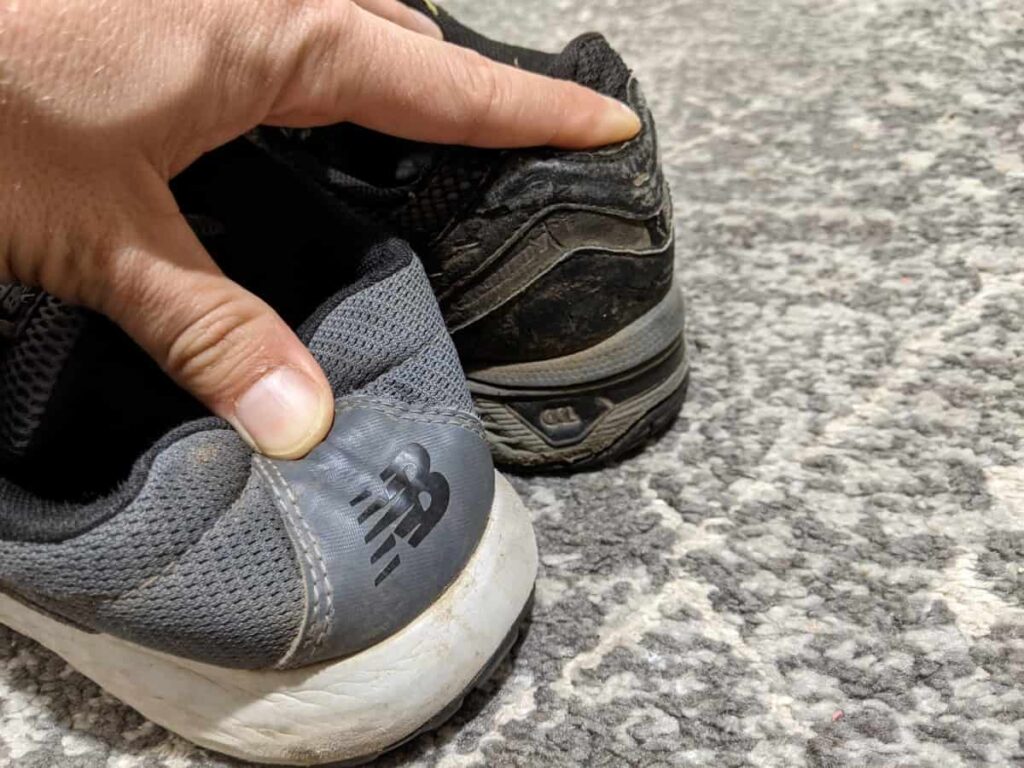
Many shoe companies do not use this stilt but instead use relatively thick, durable materials attached in such a way that it forms a solid structure for your heel.
How Do I Know If My Heel Counter Is Worn Out?
The plastic insert won’t be worn down, but due to the rest of the shoe showing signs of decline, it will change the angle of support of the heel counter, which is just as bad.
- Take your thumb and push the heel counter. A good working heel counter will not be able to be pushed inwards or downwards with your thumb.
- When checking your heel counter, place your shoes on a flat surface and look at them at eye-level from the back. If the shoes are tilting to any side, it will increase pronation (or supination) while you run together with possible foot or knee pain.
Upper
The term upper refers to the part of the shoe that covers the toes, top of the foot, and the back of the heel, connected to the outsole by a welt. The upper is usually made out of soft, breathable, form-fitting materials like mesh for breathability and synthetic leather durability. The upper’s responsibility is to firmly hold your foot in place inside the shoe, providing the feet with stability.
How Do I Know If My Upper Is Worn Out?
Visually seeing your foot pattern when inspecting the shoe usually indicates that the shoe has lost some structural integrity. The best indicator that your upper is worn out is if any part of your foot is proceeding to protrude out of the upper. Any holes, tears, or parts of the upper coming loose from the stitching indicate wear and tear and needs to be replaced.
Toe-Box
The toe-box is the shoe area that surrounds your foot from the base of your toes (ball of the foot) and is a protective and cozy house for your toes. It is usually made of mesh-synthetic stretchy materials. The toe-box is responsible for providing traction, assist the foot when pushing off, and keeping your foot stable and comfortable during the running process.
How Do I Know If My Toe-Box Is Worn Out?
A worn toe-box usually means a toe-box with holes in it. If you can see your socks or toes poking through, that’s a good sign that your shoes have about had it.

How Often Should You Replace Your Running Shoes?
From our survey, most runners replace their shoes in the generally recommended range
The key to knowing when to replace your shoes is less about mileage and more about how the shoe is doing.
The most important component to be aware of is the midsole. If the midsole of a running shoe will lose its ability to stop absorbing and recovering from the shock, that’s a sign the midsole is ‘’dying’’, and you should replace the shoe immediately if your body is used to the support.
The inability of the midsole to absorb shock can cause more impact on your joints and muscles. And here lies the sign that you can look out for. As soon as your body starts screaming that it’s not being supported by the shoe anymore, it is an excellent time to replace this long-serving friend.
How Often Do People Replace Their Running Shoes?
I really was wondering about this question, so I decided to ask a lot of people and found these results from 43 people.
The recommended replacement range from many shoe manufacturers is 300-500 miles. I wanted to find out for myself what frequency people actually replace their shoes.
| Response | Percentage |
|---|---|
| Recommended Range (300-500 miles) | 25.58% |
| When The Shoes Don’t Feel Right | 20.93% |
| When The Shoes Fall Apart | 20.93% |
| Double Recommended Range (700-800 Miles) | 9.30% |
| Bottom-end (200-300 miles) | 6.98% |
| 1 year | 4.65% |
| 5+ years | 4.65% |
| Triple Recommended Range (1000-1300 miles) | 4.65% |
| 2-3 years | 2.33% |
I thought this data was super interesting. Even though a quarter of people responded with a number in the generally recommended range, the most prevailing idea was that people decide to replace their shoes when the shoes don’t feel right.
Feeling right ranged from being uncomfortable, to actually being painful.
A lot of people (20%) didn’t pay attention to mileage, but really just ran them until the shoes fell apart. If that’s the kind of runner you are, you aren’t alone!
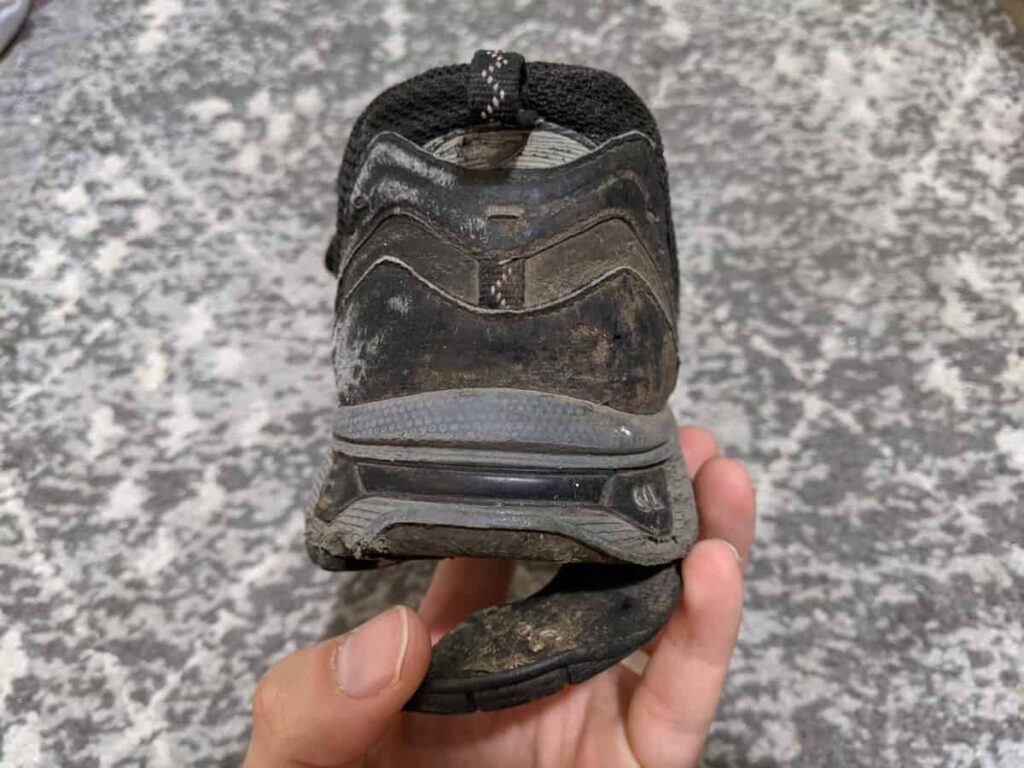
Is There a Certain Mileage To Replace My Running Shoes?
As I mentioned, shoe stores will tell you that you should replace your shoes every 300-500 miles–this is an estimation, though, and it doesn’t mean that at 300 miles your shoes are automatically broken.
There are a lot of factors–Light-footed runners’ shoes will last longer whereas heavy-footed runners will last for fewer miles.
The most important factor is how the shoes feel–if they are uncomfortable or painful to run in, it’s time to replace them. This may mean that your mileage is only 200 miles, or it could be 1500 miles! It all depends on you.
If you’re looking for a replacement timeframe, let’s look at the following example. Should you run an average of 15 miles per week, you will be looking at replacing your shoes every 5-8 months, if you follow the 300-500 recommended range.
A reliable way to keep track of the mileage done with your shoes is to track your runs via a GPS running application on your phone. By following your runs, you will be aware as soon as you hit the dreaded time-for-a-shoe-change.
How Long Do A Pair Of Running Shoes Last?
As mentioned before, the general average is between 300-500 miles. You can be a runner with a very light stroke and superior running form, which means that your shoes can last a little longer than a runner with a heavy heel-strike technique or a heavy pronator/supinator.
You can compare running shoes to a car’s shock system. Every time you drive, the shocks will absorb pressure and provide cushioning, making for a pleasant drive. Just as the shocks get worn out over time, so do your shoes’ midsoles.
When you experience this lack of compression, no more shock absorption, and a general flatness of the shoe, then it’s time to replace it. A worn-out midsole will happen at some time; it all depends on the milage of the shoe. Let us look at some estimates:
- Running 10 miles per week: The shoe should last between 10-12 months.
- Running 20 miles per week: The shoes should last between 4-6 months.
- Running 40 miles per week: The shoes should last between 2-3 months.
That is to say, if you replace your shoes as often as 300-500 miles. Many people’s shoes last much longer. Some people’s running shoes last over 5 years for thousands of miles. Others last only 200 miles. There is no single answer that fits everyone, but you can expect a lifetime between 300-500.
How To Make Your Running Shoes Last Longer?
Every pair of running shoes that you buy will eventually find their way to the garbage bin. Nothing lasts forever, not even your favorite pair. There is no definite guarantee of how long a running shoe should last, just an estimate of 300-500 miles, and anything more than that is a bonus.
It makes you wonder if there are any possible ways to make your running shoes last a bit longer? Well, it turns out that there are ways to do this. Let us work through it and see if any of these methods could help your favorite pair put on a few extra miles.
Wear Them Less
This might be a confusing statement for some. Don’t start to run less frequently; instead, if you are running an errand, don’t do it in your running shoes. Wearing your super comfortable running shoes when performing non-running tasks like shopping, walking the dog, and working in the garden, will increase the mileage quickly.
Before you know it, the shoes’ average life expectancy will be a lot less than what you have bargained on.
One easy trick many people do is to wear their old pair of running shoes (the ones with all the holes in them) for doing stuff around the house.
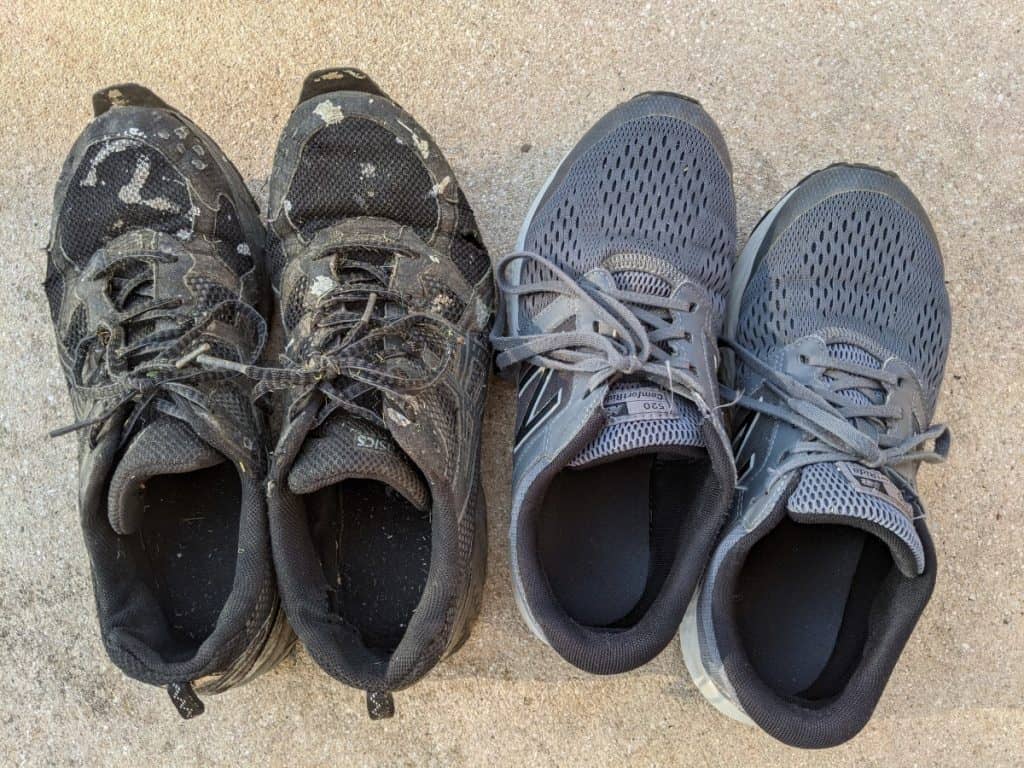
Due to the extra mileage added on by performing activities you should have accomplished with your sneakers, your shoes will reach the 300–500-mile mark much quicker than anticipated. Standing on the shoe’s midsoles all the time will gradually ”kill” them, depending on how often you wear them for other activities can shorten their lifespan to 1-3 months!
Untie The Laces
According to Hansons Running, simply untying your shoelaces after a run and before you forcibly slip your foot out through the heel collar could extend the life of your shoe by about 10-15 percent. Untying your laces before kicking them off your feet will result in little compromise to the heel collar area, which in turn will lend added stability to the shoe for longer.
Never Dry Them In The Dryer
After washing your shoes, either by hand or on a low cycle in the washing machine, you will need to get them dry. Please don’t make the mistake of thinking that it is a good idea to put your clean shoes in the dryer. It is just too hot for some materials found in your running shoe and will cause foams to break down quicker due to this heat exposure.
Furthermore, one of the most sensitive components in running shoes is the glue that holds the entire shoe together. Exposing the glue to extreme temperatures is a surefire way for your shoe to not last as long.
Instead, let the shoes air dry or dry them with a towel before adding newspapers to the inside of the upper to help speed up the drying process.
Buy Two Pairs At A Time
Instead of making regular trips to the sports shop, buy two pairs of running shoes and alternate running between them. In principle, it will make your shoes last longer, decreasing the time spent in a running shoe department and allow time for the shoes to recover after each run. Choose a shoe that is ideal for short and fast runs. The other shoe can be more suited for longer runs.
Work On Your Running Form
Working on your running form does not require a degree in physics. If you see that your running shoes are worn out very quickly, it could be due to your running style. Often, it’s just a few minor tweaks, and you are good to go, so start simple, run mindfully, and with a consistent rhythm (short and quick cadence).
In fact, as part of the survey I made up above, a few people whose shoes wore out very quickly was because of an issue of form causing the shoes to wear excessively in one region. If your gait doesn’t have issues, your shoes will last a lot longer.
Watching some elite runners in action is a good starting point; try to emulate the motion, not necessarily their running form. Try to run in a neutral line from head to toe. Focus on moving forward and not up and down. Changing your running form could potentially increase the lifespan of your running shoes considerably.
Should you want to make 100 % sure if you are running correctly, see a physical therapist or a podiatrist, who will be able to give you a complete overview of your running technique and assist with the necessary modifications. Changing to a more efficient form will mean less impact on the body and the shoes.
Do Running Shoes Have a Shelf Life?
Asics and New Balance do not recommend buying shoes in advance before using them–I reached out to them directly and was told to only buy shoes in the month that I plan to use them.
I think, personally, that this is excessive, but I do a breakdown of some of the components of a running shoe and their shelf life in my article here. You can get a better idea of how long you can store running shoes without using them, there.
Conclusion
Running shoes forms an essential part of any runner’s experience, whether on tarmac or running trails. Its primary function is to protect your feet and absorb most of the shock created by the running movement.
When your running shoes are not taking the hits of the road anymore, and your limbs and muscles start feeling the effects, then you will know it’s time to replace them. To confirm your suspicions, you can go through the visual checklist to verify the possible structural damage yourself and make the right decision of what to do next.
Your feet will usually let you know first that it’s time to replace; listen to them.
Inspirations:
Parts of a Shoe | Running Shoe Anatomy (runnersworld.com)
How To Check If Your Running Shoes Need Replacing (sydneyphysioclinic.com.au)
Anatomy of a Running Shoe – with Infographic | Running Shoes Guru

